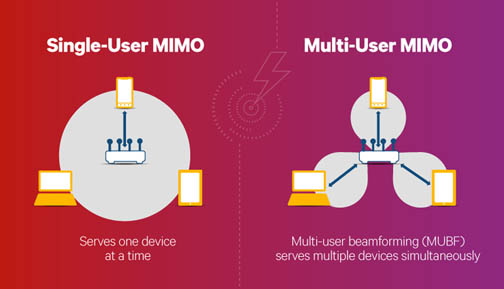BY SIMON BRAND
Senior Director of Product Management
Qualcomm Atheros
www.qca.qualcomm.com
Consumers are relying on more connected devices than ever — smartphones and tablets, smartwatches, notebooks, and more. From a networking perspective, this means demand for Internet access on a Wi-Fi router is all of a sudden like rush hour traffic on a freeway. Traffic slows to a crawl as more devices are sending and receiving data on the same popular network.
The second release of the 802.11ac Wi-Fi standard aims to ease this congestion and boost the flow of data with a feature called MU-MIMO (multiple user, multiple input, and multiple output). Traditional Wi-Fi routers and access points share bandwidth between multiple devices and communicate with them sequentially. Your tablet, for example, is served for just a fraction of a second, before your download gets back in line behind your smart security system. MU-MIMO, on the other hand, uses four-stream 802.11ac to serve multiple devices at once. The result is up to three times faster Wi-Fi throughput to every device on a busy network.

For service providers, MU-MIMO allows operators to offload data and media traffic from the cellular network so they can better cope with the challenges of skyrocketing data demand. But the real advantage is the value it delivers to consumers, enterprises, and other crowded networks. MU-MIMO enables high-bandwidth, low-latency connectivity and, in other words, it is designed to provide a better user experience. With the average American home approaching 20 connected devices — and corporate networks being even more crowded — each mobile device will get a smaller and smaller fraction of bandwidth.
MU-MIMO uses sharply focused grouping and rate adaptation algorithms to maximize performance for all devices on a network at speeds above 1 Gbit/s. It uses an advanced form of transmit beamforming, in which a router directs signals toward a group of devices, versus just one device, to improve performance.
Mobile device manufacturers and consumer electronics manufacturers are also preparing smartphones and tablets to take advantage of these advanced features to achieve up to three times faster 11ac Wi-Fi. Qualcomm now offers the VIVE ecosystem with MU | EFX MU-MIMO technology 802.11ac 2.0 solutions for networking equipment, consumer electronics, and mobile and computing devices.
Advertisement
Learn more about Qualcomm Atheros





